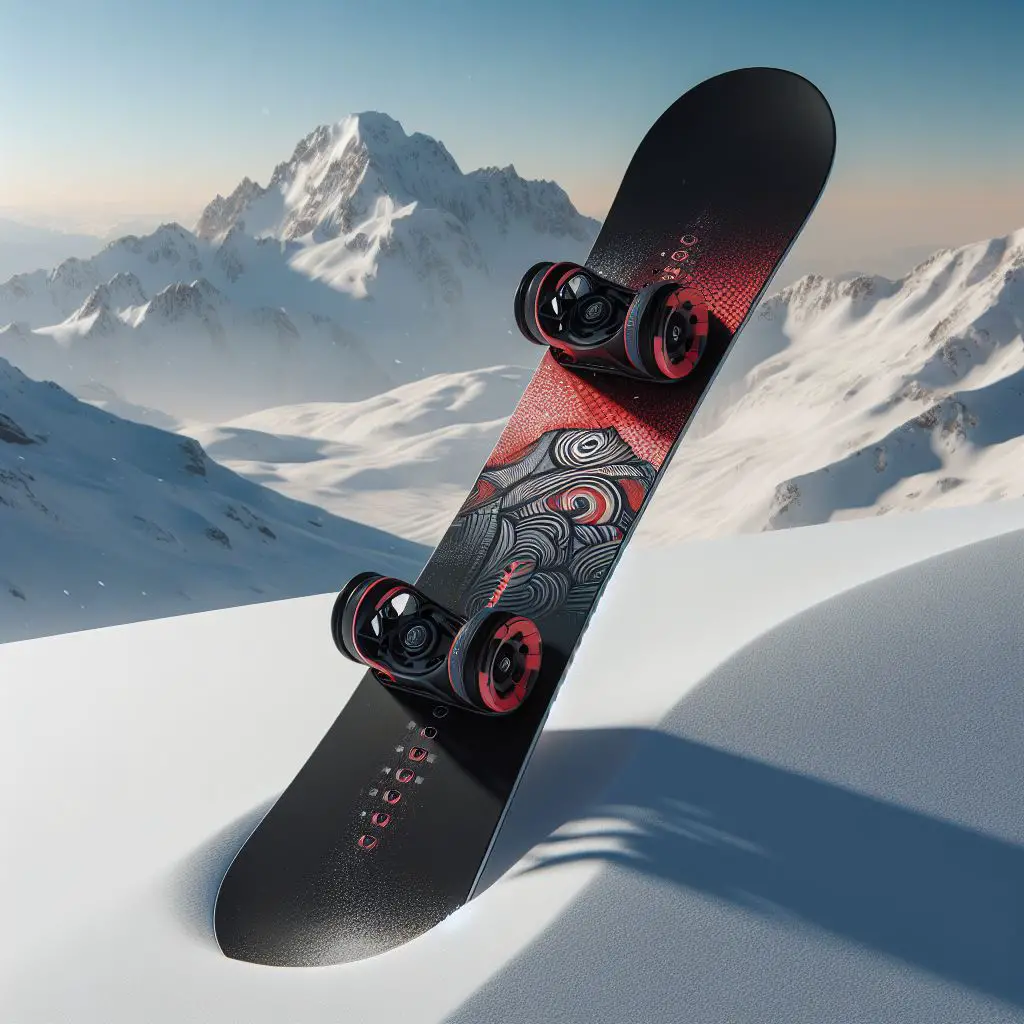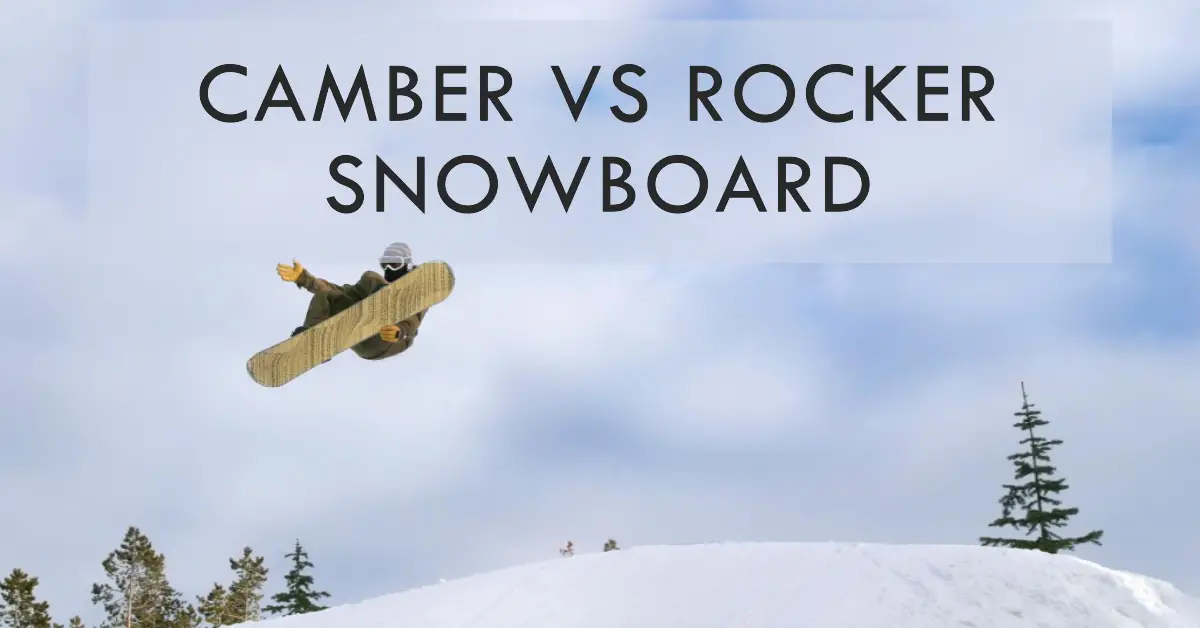Camber and rocker refer to the upward or downward arch built into a snowboard’s profile when placed flat on a surface. As ride personalities differ greatly between these two dominant modern shapes, choosing correctly suits personal performance goals, snow conditions, and terrain. Analyze how camber vs rocker boards handle to decide the best all-mountain or freestyle snowboard profile-improving technique.
Table of Contents
Key Differences Between Camber and Rocker Snowboard Shapes
Camber designs emulate the original snowboard profile innovation with:
- A lifted center arch raising the middle of the board off the ground
- Downward sloping tip-to-tail contact points
- Loads energy storing flex which unleashes as recoil boosting air
- Forces correct balanced stance holding edge during carves
Rocker offers an opposite profile with:
- An upward-lifted tip-to-tail curve
- Central zone is closer to the snow when flat
- Softer flex without tensioned recoil effect
- Allows playfully loose feeling floaty turns Hybrids now combine both shapes strategically maximizing benefits:
- Camber underfoot with rockered tips = pop and stability
- Mild camber overall with rocker inserts = versatile all-mountain riding
- Rocker between feet with camber at tips = pow float through the tail
How Camber Snowboard Designs Ride

Camber dominant riding dynamics include:
✅ Powerful energetic pops-off jumps from recoil
✅ Hard instant edge bites carving aggressively
✅ High grip and speed holding firm lines
✅ Responsive handling through uneven crud
✅ Forced balanced stance improves form
| Camber Suits | Camber Challenges |
|---|---|
| All-mountain charging: Camber is well-suited for riders who enjoy aggressive riding across various terrains. | Can hook edges catching unexpectedly: One challenge with camber boards is the potential for catching edges unexpectedly, especially in certain conditions. |
| Ground trick skill building: The design of camber boards provides a stable platform for riders looking to enhance their ground trick skills. | Demands extra leg drive and stamina: Riding camber requires additional leg drive and stamina, making it more physically demanding. |
| Groomed runs boost air: Camber is advantageous for riders seeking increased airtime on well-groomed slopes. | Limits float hovering over deep snow: Camber boards may struggle with floatation in deep snow, limiting their performance in powder conditions. |
| Riders focused on the correct technique: Camber is preferred by those who prioritize and focus on using the correct riding techniques. | Feels too stiff for casual hobbyists: Some riders, especially casual hobbyists, may find camber boards too stiff for their liking, impacting overall comfort and enjoyment. |
The energized responsiveness makes camber a high-performance design that rewards solid skill.
How Rocker Snowboard Designs Ride
Rocker dominant traits encompass:
✅ Softer slower edge transitions
✅ Lower swing weight reducing leg burnout
✅ Lifted tips allowing deeper float over powder
✅ Catch-free looser feels unstable at speed
✅ Surfier turns initiated from the rear
Rocker matches preferences for:
- All-mountain freestyle play
- Powder hounding
- Beginner stability
- Slow speed maneuverability
The rocker has limitations with:
- Minimal pop for big air
- Cornering traction deteriorates at pace
- Chatter and washout risk during fast hard pack runs
- Difficult mastering the correct technique
The forgiving mellow personality suits messing around though gives up responsiveness.
Hybrid Camber + Rocker Advantages
Hybrid: Camber Underfoot + Rocker Tips
✅ Camber adds snap-off jumps and better edge grip
✅ Rocker uplifted tips allow deeper snow float
Best for all-mountain freestyle riders wanting trick boosting that also handles various snow conditions.
Hybrid: Rocker Between Feet + Camber Tips
✅ Cambered tips provide traction and stability at speed
✅ Rocker zone lifts body weight reducing leg strain
✅ Floated rocker inserts ease float over choppy terrain
Best for big mountain explorers optimizing backcountry powder float and then solidly driving out.
Hybrid: Mild Camber Profile + Rocker Inserts
✅ Main camber zone still delivers control carving
✅ Strategic rocker zones soften landings and smooth bump impacts
Best for mountain progression when slightly mellowing camber precision remains beneficial for evolving technique.
Guide to matching Snowboard Profile with Terrain and Snow
GROOMED RUNS
Camber – High edge power digs into hard pack
Rocker – Chatter from loose feel unless mastered
Hybrid – Offers precision if camber dominant
POWDER
Camber – Suboptimal flotation needs extra rear weighting
Rocker – Uplifted tips enable effortless surfy float
Hybrid – Rockered nose helps punch through deep stuff
PARK & PIPE
Camber – Max pop for huge air with stability for landings
Rocker – Forgiving jibbing with lower swing weight
Hybrid – Combine best tricks and buttery feel qualities
ALL-MOUNTAIN
Camber – Reliably adapts turning and edge grip to anything
Rocker – Casual cruising limiting charging potential
Hybrid – Mix characteristics for ideal versatility
Intermediate Rider Tips Adjusting to New Profile
Transitioning to Rocker From Camber
| Mindset Shift | Body Adjustments |
|---|---|
| ✅ Let go embracing loose surfy feel rather than forcing old technique | ✅ Lean further back during float through powder and crud |
| ✅ Weight moves backseat first before gently initiating turns | ✅ Increase knee bend absorbing bumps without jarring |
| ✅ Use rocker playfulness practicing butters and pivots | ✅ Prewind shoulders aligning upper and lower body before carving |
Transitioning to Camber From Rocker
| Mindset Shift | Body Adjustments |
|---|---|
| ✅ Commit fully trusting edges will dig in as needed | ✅ Centered balanced stance keeps weight directed over working edges |
| ✅ Drive every turn to a conclusion without retreating early | ✅ Lower into an athletic stance keeping legs spring-loaded |
| ✅ Embrace energetic rebound as a free speed boost | ✅ Open shoulder alignment setting platform to rail carves |
Why Freestyle and Jib Snowboarders Often Prefer Rocker
Rocker advantages for playful tricks include:
👉 Initiate slides and rotations earlier pre-winding less
👉 Softer landings reduce harsh impacts in the park
👉 Lower swing weight reduces leg burn allowing more attempts
👉 Catch-free tips enable creative approach variations
👉 More forgiving tweaking grabs and presses off edges
The looser feel and flexibility simply make rocker boards fun for messing around with resort features all day.
Conclusion
Camber and rocker snowboard designs fundamentally change how boards handle hard snow. Camber’s energetic rebound rewards aggressive riders looking to rail trenches and boost floaty method air. Meanwhile rocker better suits surfier powder style with its loose, lofty personality. Hybrid profiles strike ideal compromises. Match the chosen profile with personal riding goals and snow conditions to progress while having the most fun on the mountain.
